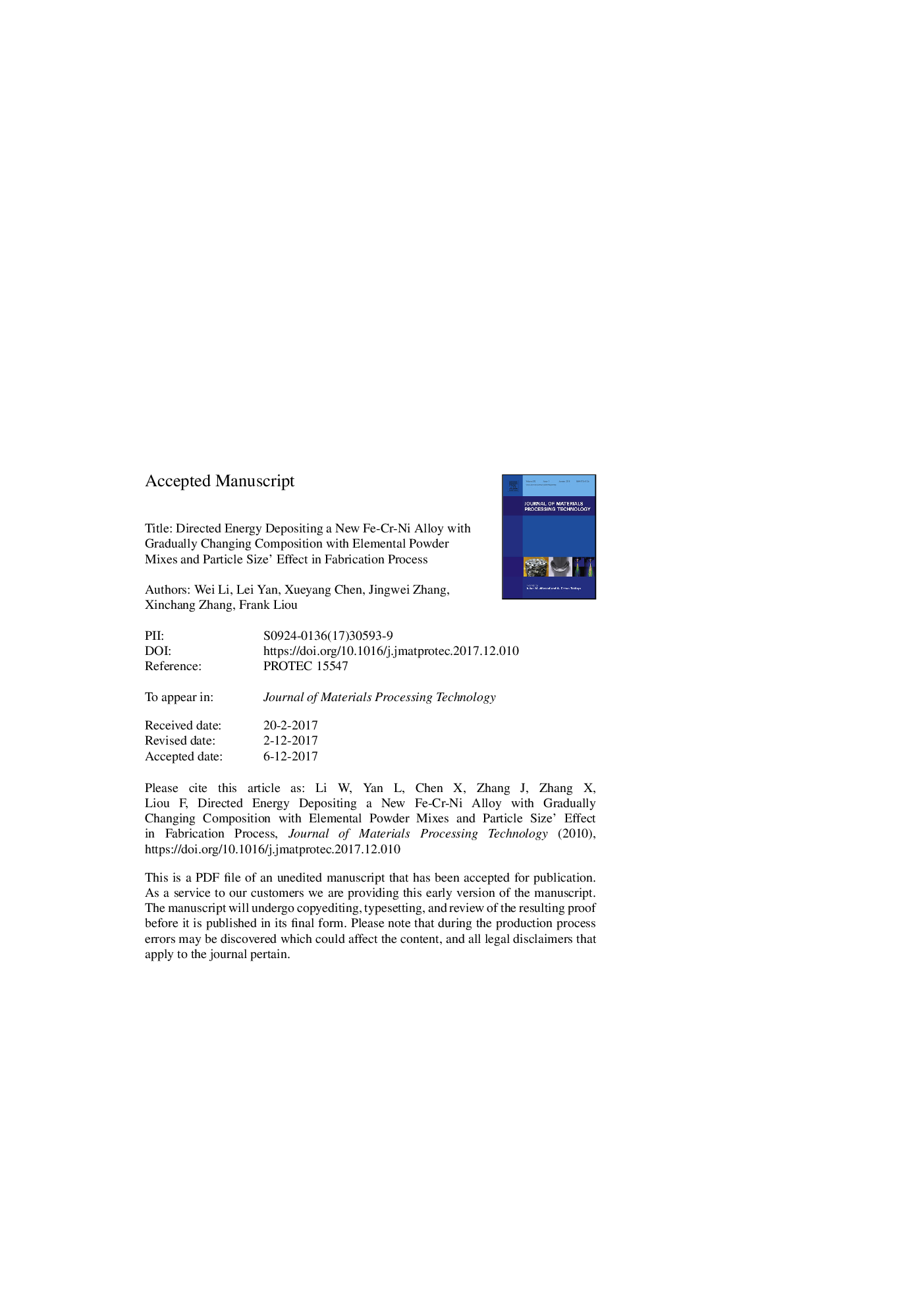| کد مقاله | کد نشریه | سال انتشار | مقاله انگلیسی | نسخه تمام متن |
|---|---|---|---|---|
| 7176423 | 1466712 | 2018 | 29 صفحه PDF | دانلود رایگان |
عنوان انگلیسی مقاله ISI
Directed energy depositing a new Fe-Cr-Ni alloy with gradually changing composition with elemental powder mixes and particle size' effect in fabrication process
دانلود مقاله + سفارش ترجمه
دانلود مقاله ISI انگلیسی
رایگان برای ایرانیان
کلمات کلیدی
موضوعات مرتبط
مهندسی و علوم پایه
سایر رشته های مهندسی
مهندسی صنعتی و تولید
پیش نمایش صفحه اول مقاله

چکیده انگلیسی
To explore novel alloy possessing both corrosion resistance and sufficient plasticity to meet various functionality requirements in severe corrosion working environment, in this study, a new Fe-Cr-Ni based alloy with gradually changing composition was synthesized by directed energy deposition with pre-mixed elemental powder. A thin wall sample was fabricated from bottom to top layer by layer following four composition designs (Fe-16Cr-8Ni, Fe-14Cr-16Ni, Fe-12Cr-23Ni, Fe-9Cr-28Ni) to achieve the transition from ferritic phase to austenite phase. The elemental powders used in this research were characterized to analyze the shape and size distribution. The mixing enthalpy for the three elements was studied since it can impact on the deposits homogeneity. Different material characterizations were performed to examine the alloy properties. Microscopic metallography of sample was acquired to analyze the microstructure. Energy dispersive spectroscopy (EDS) analysis examined the composition in the sample. A particle size optimization idea was introduced to keep the original mixing composition. Then Vickers hardness test was done to observe the gradually changing hardness profile. Finally, the phase identification was investigated by X-ray diffraction (XRD). The results indicate that with the increasing Ni and decreasing Cr content, the Vickers hardness numbers (VHN) tend to decrease gradually. The microstructure of regions with 8% and 16% of Ni is mainly the lathy and acicular morphologies, while standard austenite morphology, cells and dendrites, were observed in the regions with 23% and 28% Ni. The XRD pattern can basically verify the metallography observation.
ناشر
Database: Elsevier - ScienceDirect (ساینس دایرکت)
Journal: Journal of Materials Processing Technology - Volume 255, May 2018, Pages 96-104
Journal: Journal of Materials Processing Technology - Volume 255, May 2018, Pages 96-104
نویسندگان
Wei Li, Lei Yan, Xueyang Chen, Jingwei Zhang, Xinchang Zhang, Frank Liou,